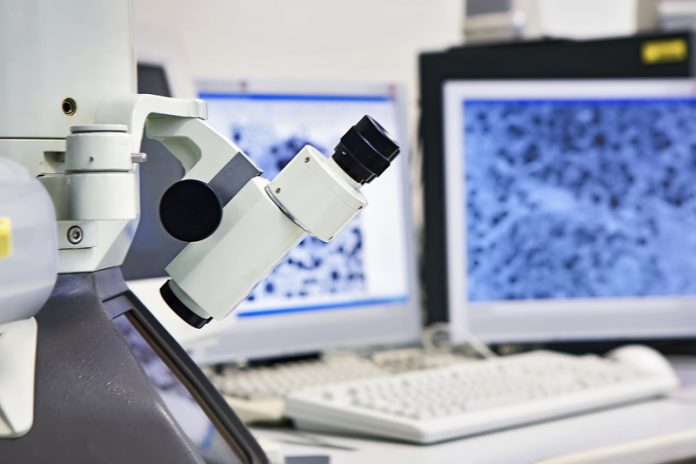Dr. Siddharth V. Patwardhan, Head of the Green Nanomaterials Research Group at the University of Sheffield highlights nanomaterials and their functions…
Nanomaterials are worth multibillions of dollars globally but their production is wasteful and environmentally damaging. At the Green Nanomaterials Research Group, University of Sheffield, we focus on discovery, design and manufacturing of functional nanomaterials.
Functional Nanomaterials
Nanomaterials exhibit critical size, at least in one dimension, on the scale of 1 to 100 nm and have interesting properties such as electrical, optical and catalytic activities. As a result, nanomaterials are widely used in many consumer products and various industrial sectors including oil refining, food, coatings, cosmetics, textile, transport, healthcare, electronics and communication. The functional properties of nanomaterials typically depend on particle size, shape, surfaces chemistry and crystallinity. A recent inventory has documented more than 1800 consumer products that contain nanomaterials and many more non-commodity products such as industrial catalysts and separation media. The total global production of all types of nanomaterials is of the order of several million tons per annum, with a global market worth $3.4bn, which is expected to reach more than $10bn by 2020 given the continuous growth in this field.
Current methods: problems and challenges
Current nanomaterials manufacturing methods suffer from many problems leading to high costs, an extremely adverse environmental impact (e.g. hazardous waste) and unsustainable production. At present, nanomaterials are manufactured using top-down (lithography, milling and etching) or bottom-up (vapour deposition, sol-gel, precipitation, pyrolysis, solvothermal) approaches. Top-down approaches predominate current manufacturing processes for nanomaterials. Bottom-up approaches are promising and are known to precisely control properties of nanomaterials, but they also suffer from various issues such high consumption of water and energy, poor materials utilisation efficiencies, need for ultrapure reagents and use or production of toxic or hazardous chemicals. These issues clearly stress the urgent need for developing fundamentally new production methods for nanomaterials that are green and sustainable.
Bioinspired Green Nanomaterials
Biology, via biomineralisation, produces large quantities of sophisticated and hierarchically organised nanostructured biominerals under mild conditions. Harnessing this biological approach to sophisticated nanomaterials has exciting prospects and it encompasses most of the 12 principles of green chemistry. Learning from biomineralisation, we have developed green routes to functional nanomaterials. The key benefits of this method are as follows:
- A rapid process (takes only minutes), operates at room temperature and in water;
- It is a one-step route, with substantial reductions in time and energy usage;
- A mild and facile processing using non-hazardous chemicals;
- It offers superior control for producing tailored materials for desired application;
- It is a scalable process with the potential for industrial scale implementation.
This method is applicable to a wide range of nanomaterials and to date over 50 materials have been produced using a bioinspired green synthesis. Ultimately, our aim is to develop processes that will help reduce the environmental burden from nanomaterials, yet without compromising on their utilisation.
Applications of Green Nanomaterials
Research in the group undertakes the synthesis of bespoke nanomaterials using biologically inspired green routes in order to design novel materials for a range of applications. We have demonstrated the potential of green methods for nanomaterials synthesis by realisation of their real-life applications. The focus is on increasing technology readiness level (TRL) and delivering technologies that are ready for commercialisation. Currently, we are developing green nanomaterials for 4 distinct sectors:
- Carbon capture: design and testing of novel sorbents for CO2 capture and its conversion/ sequestration.
- Environmental remediation: discovery of nanomaterials for removal of pollutants from air and water via catalytic degradation or selective adsorption.
- Catalysts and biocatalysts: metal or enzyme supported catalysts for Fischer-Tropsch synthesis, catalytic reduction, C-C coupling reactions of pharmaceutical relevance and hydrolysis reactions for biofuels/chemical feedstock production.
- Biomedical applications: development of new drug delivery systems and testing their biocompatibility.
A major theme in our group is generating technologies enabling scaled-up manufacturing of these novel materials.
Services offered
We provide consultancy and research and development (R&D) services to a wide variety of sectors and markets including energy, waste derived products, petrochemicals, pharmaceuticals, natural products. We have vast experience of working with large multinational as well as small and medium size industry. Specific examples of services offered include:
- Techno-economic and market evaluation of processes and materials;
- Services to test scalability and optimisation of production of particles and particulate formulations;
- Synthesis and characterisation of nanostructured and porous materials;
- Technologies for air and water decontamination.
References
- Biomimetic and bioinspired silica: recent developments and applications, Chem. Commun., 2011, 47(27), 7567 – 7582
- Scalable Continuous Solvothermal Synthesis of Metal Organic Framework (MOF-5) Crystals, Chemical Engineering Journal, 285, 718-725, 2016.
- A Feasibility Study of the Biologically Inspired Green Manufacturing of Precipitated Silica, Chemical Engineering Journal, 244, 483-492, 2014.
Funding
The group has received funding from EPSRC, Royal Society, Nuffield Foundation, Carnegie Trust and Royal Academy of Engineering.
Biography of the group leader
Dr. Patwardhan, a Chartered Chemist, obtained a B.Eng. in Petrochemical Engineering, followed by M.S. and Ph.D. in Materials Science and Engineering. He gained post-doctoral experience in materials science and inorganic chemistry. He became a Lecturer in Chemical and Process Engineering, University of Strathclyde. He moved to the University of Sheffield to take the position of Senior Lecturer in Chemical and Biological Engineering, where he leads the Green Nanomaterials research group. Dr. Patwardhan is an Associate Editor of SILICON. He is affiliated with several professional bodies and has been a member of the Royal Society of Chemistry’s Materials Chemistry Division Council, EPSRC’s Early Career Forum for Manufacturing Research and funding panel at the British Council. He has held various visiting positions including at RIKEN, Japan, IIT Bombay, and University of Akron, USA.
Dr. Siddharth V. Patwardhan BE MS PhD CChem
Department of Chemical and Biological Engineering
Head of the Green Nanomaterials Research Group
The University of Sheffield
S.Patwardhan@sheffield.ac.uk
Please note: this is a commercial profile











